New research has found the relative predictability and consistency of waves means energy generated from the ocean could play a vital role in improving reliability and stability, while also reducing costs in a renewables-powered grid.
The report, completed for Wave Swell Energy by Australia’s national science agency, the Commonwealth Scientific and Industrial Research Organisation (CSIRO), showed that wave energy converters added significant value to a future energy system when deployed alongside wind and solar PV resources, which are more variable and intermittent than wave power.
Wave Swell Energy has just completed a successful 12-month trial of its groundbreaking UniWave200 prototype off King Island in Tasmania, where the device supplied electricity to the island’s microgrid and exceeded performance expectations.
As part of the new research, CSIRO explored the economic benefits that wave energy converters offer by improving the reliability of electricity supplies in a variety of weather conditions.
The study found the predictability and consistency of wave power can deliver commercial advantages in hybrid applications by reducing the need for energy storage and smoothing the inconsistent availability associated with wind and solar PV.
For example, modelling of multi-day interruptions to supply found that deploying a combination of solar, offshore wind and wave power, coupled with battery storage, would require less than half the capital expenditure of a system with just solar, offshore wind and battery storage. Compared to a hybrid of just solar and onshore wind, the model that includes wave power would require one-third of the expenditure.
Wave Swell Energy CEO Paul Geason welcomed the findings, declaring that wave power has arrived and is ready to contribute to global decarbonisation efforts.
“We have increasingly sophisticated tools that can accurately predict waves and their size in a given location,” said Mr Geason.
“CSIRO’s research shows Australia’s oceans can complement wind and solar to provide a dependable supply of energy in a variety of weather conditions, helping to bring down the price of electricity in a network that is increasingly dependent on intermittent renewable sources.”
Mr Geason said that just as Australia has become a world leader in solar innovation, it is now on the cusp of a wave power boom, with Wave Swell Energy’s technology standing at the ready to unlock the potential of the world’s oceans.
The researchers assessed three representative locations across Victoria and South Australia that were selected for their wave characteristics, proximity to transmission infrastructure and separation from marine parks. The study builds on previous research that Australia’s southern coastline provides wave conditions that can contribute a significant proportion of Australia’s renewable energy supplies.
The research shows that wave power can help to meet the growing demand for technologies that can deliver guaranteed volumes of electricity as coal and gas power stations are retired.
Throughout the year-long trial at King Island, Wave Swell Energy’s Uniwave200 converter supplied electricity to the island’s microgrid to complement wind, solar and energy storage.
Mr Geason described the island as functioning like a working laboratory, demonstrating the potential of a variety of renewable energy technologies working together to provide energy for homes, businesses and industry, regardless of whether the sun is shining or the wind is blowing.
“Our pilot demonstration on King Island has proven that wave power can supply energy in a variety of weather conditions, boosting reliability and stability while also reducing the cost of guaranteeing energy supplies.
“We know that wind and solar can produce vast amounts of low cost energy, but developing complementary technologies including wave power and storage will be key to unlocking the greatest benefits.
“The sun doesn’t always shine and the wind doesn’t always blow, but waves are predictable and will help to fill those gaps,” Mr Geason said.
Additional information:
The CSIRO report is available here.
Images of Wave Swell Energy’s prototype Uniwave200 are available here.
About Wave Swell Energy: Founded in 2016, Wave Swell Energy has developed an innovative technology to harness the energy of the ocean without the limitations of past wave energy converters. Applying a groundbreaking design that replicates a natural blowhole formation and positions all moving parts above the waterline, Wave Swell Energy has completed a successful one-year trial of its Uniwave prototype and is now focused on scaling up its designs and deploying more devices around the world.

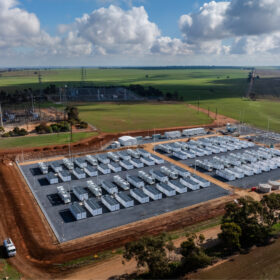
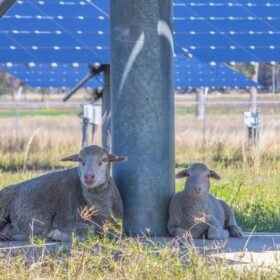
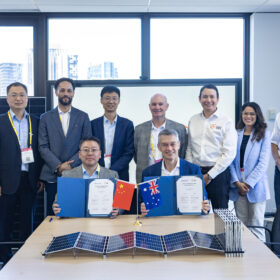
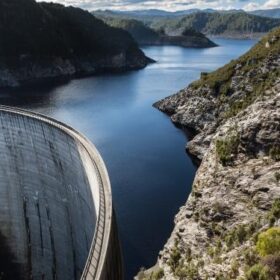
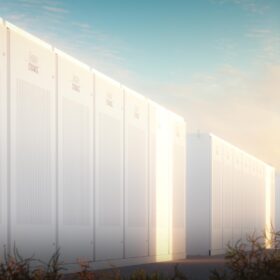
By submitting this form you agree to pv magazine using your data for the purposes of publishing your comment.
Your personal data will only be disclosed or otherwise transmitted to third parties for the purposes of spam filtering or if this is necessary for technical maintenance of the website. Any other transfer to third parties will not take place unless this is justified on the basis of applicable data protection regulations or if pv magazine is legally obliged to do so.
You may revoke this consent at any time with effect for the future, in which case your personal data will be deleted immediately. Otherwise, your data will be deleted if pv magazine has processed your request or the purpose of data storage is fulfilled.
Further information on data privacy can be found in our Data Protection Policy.